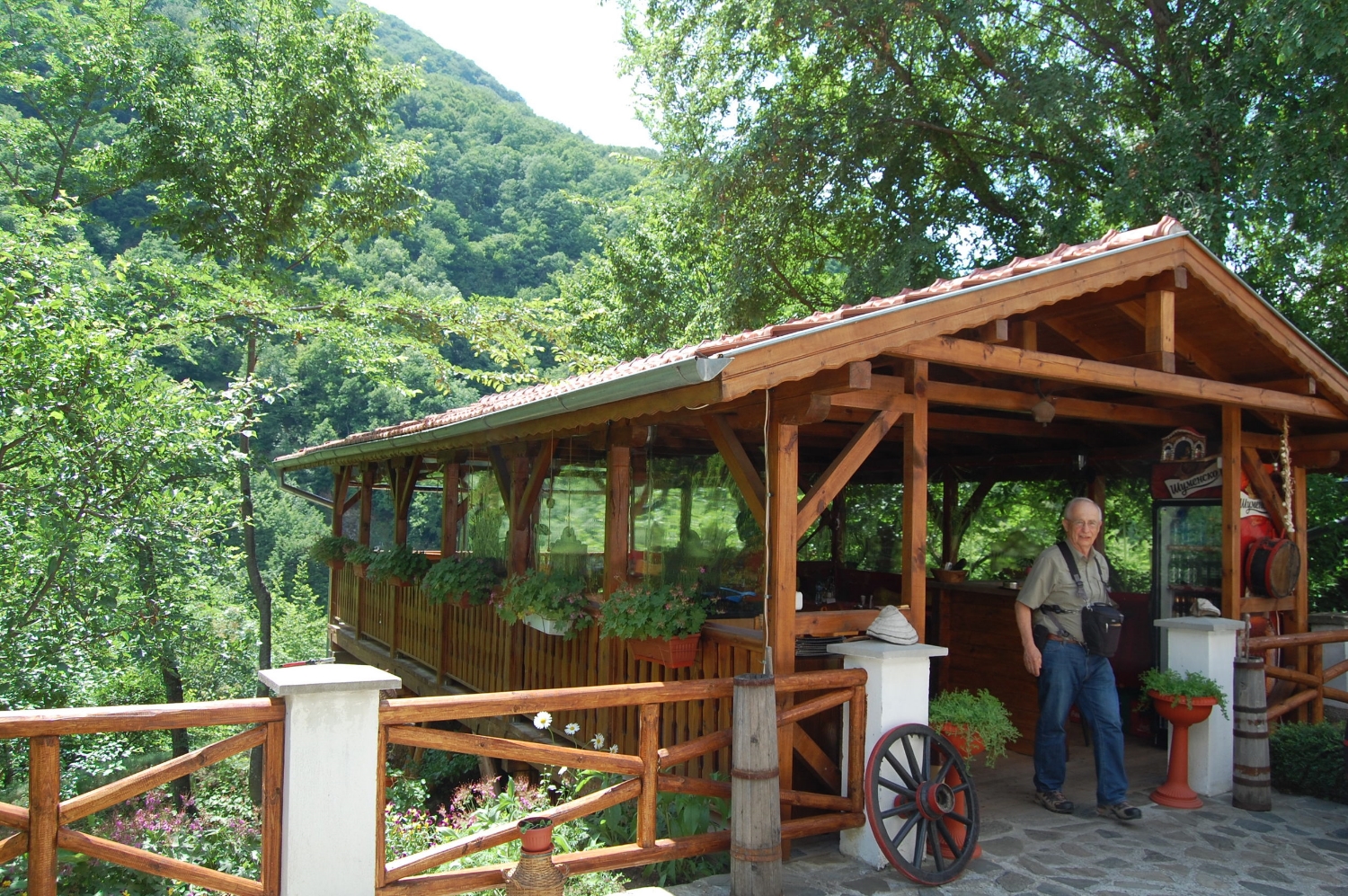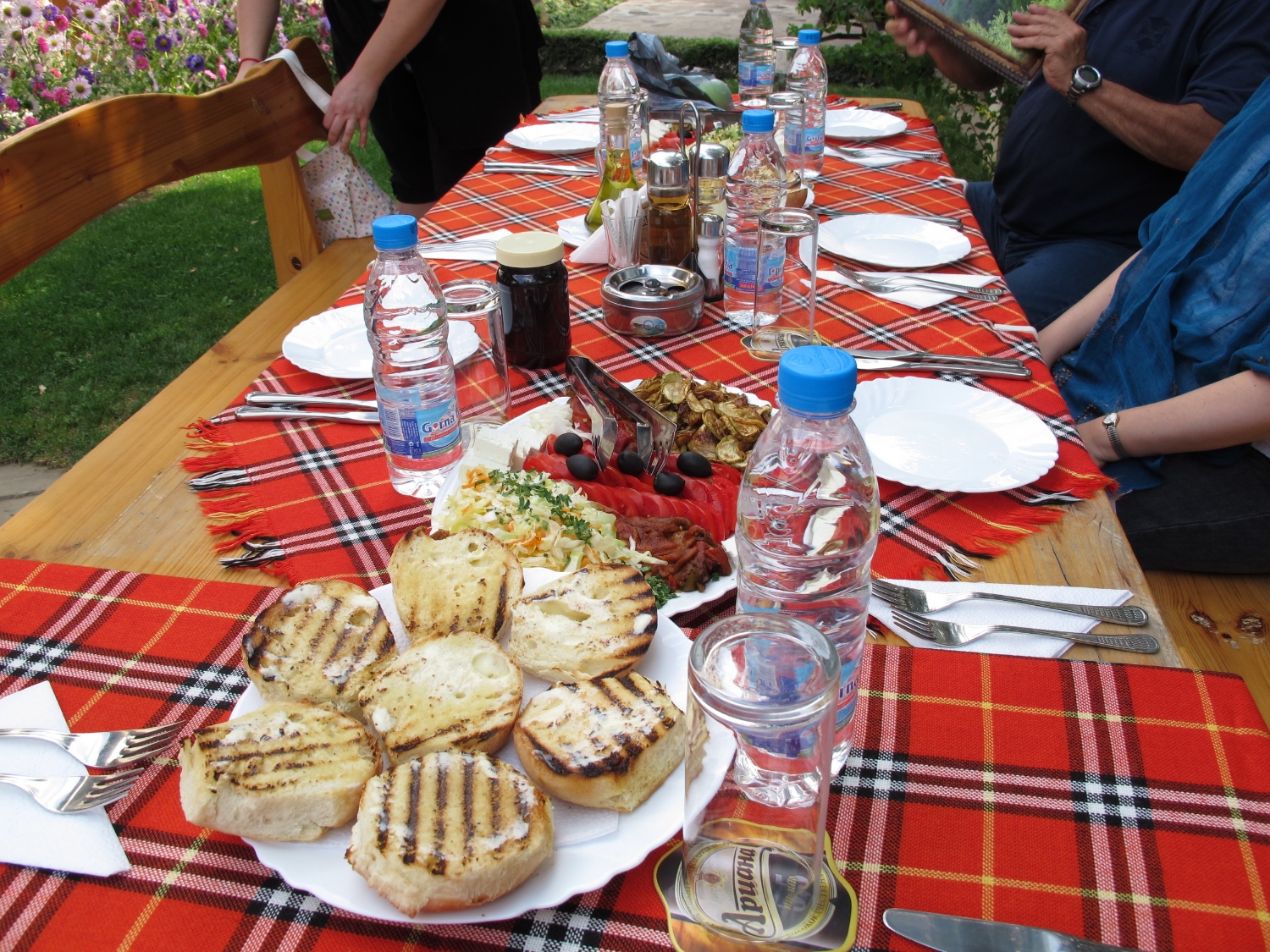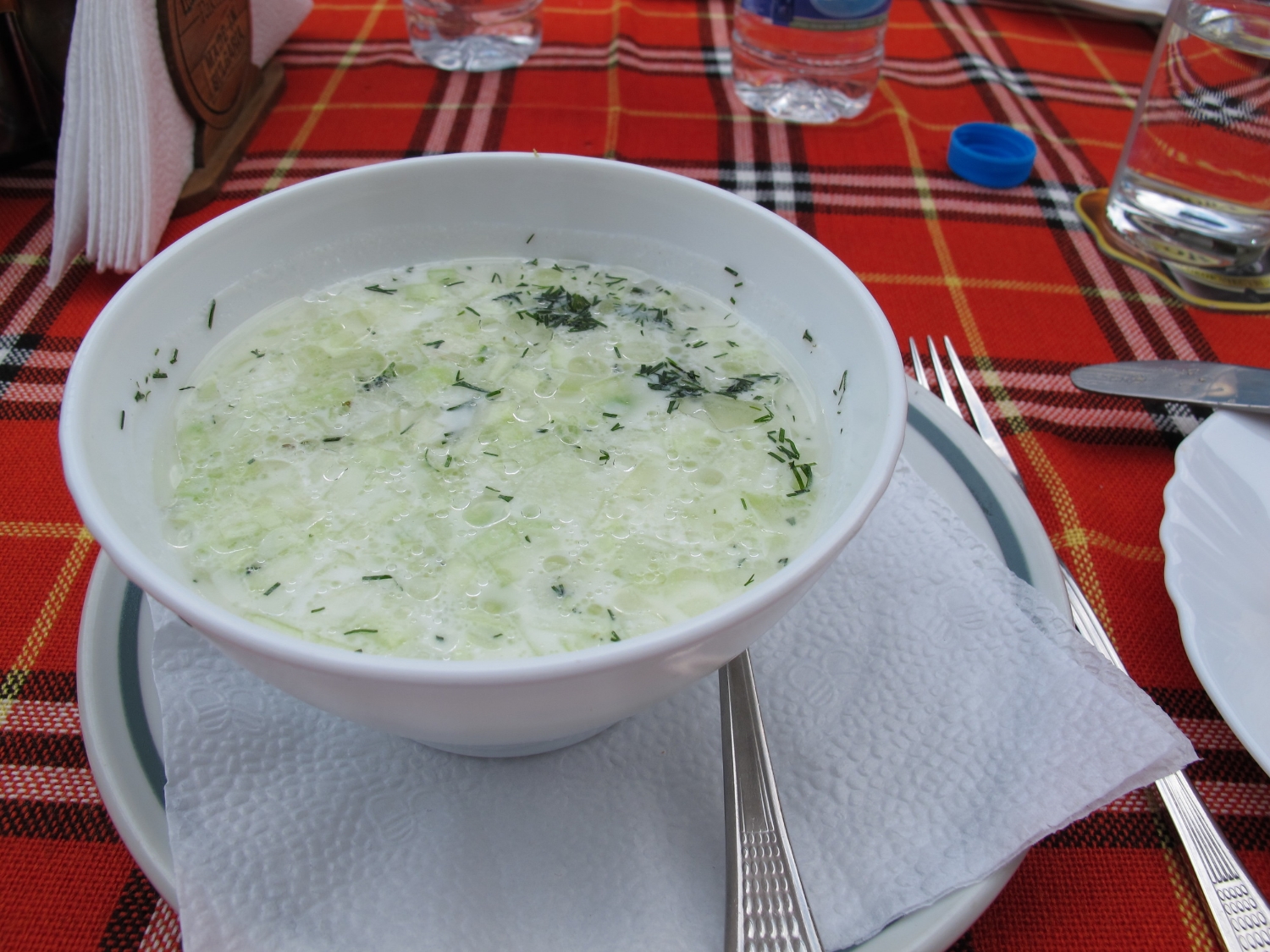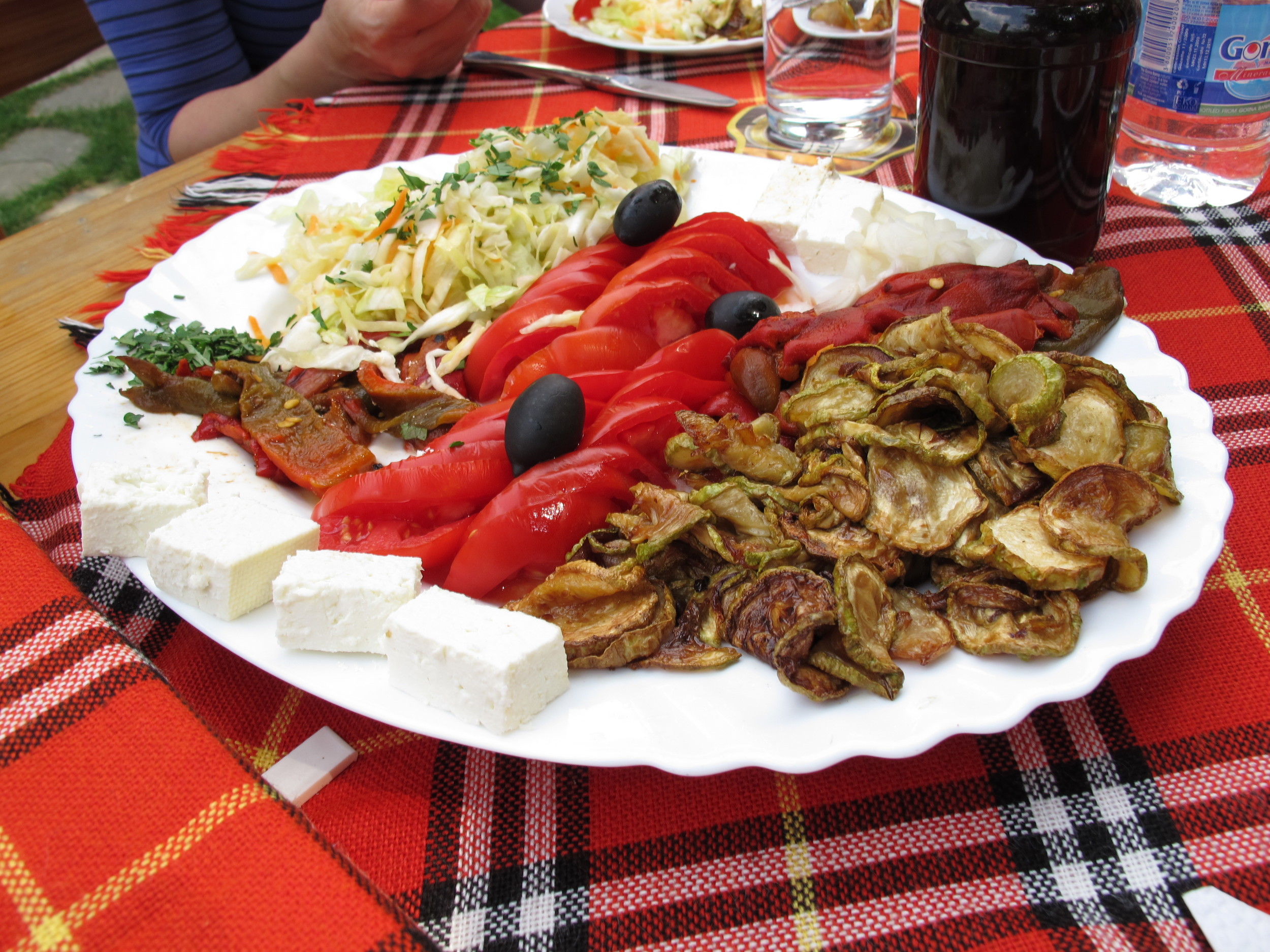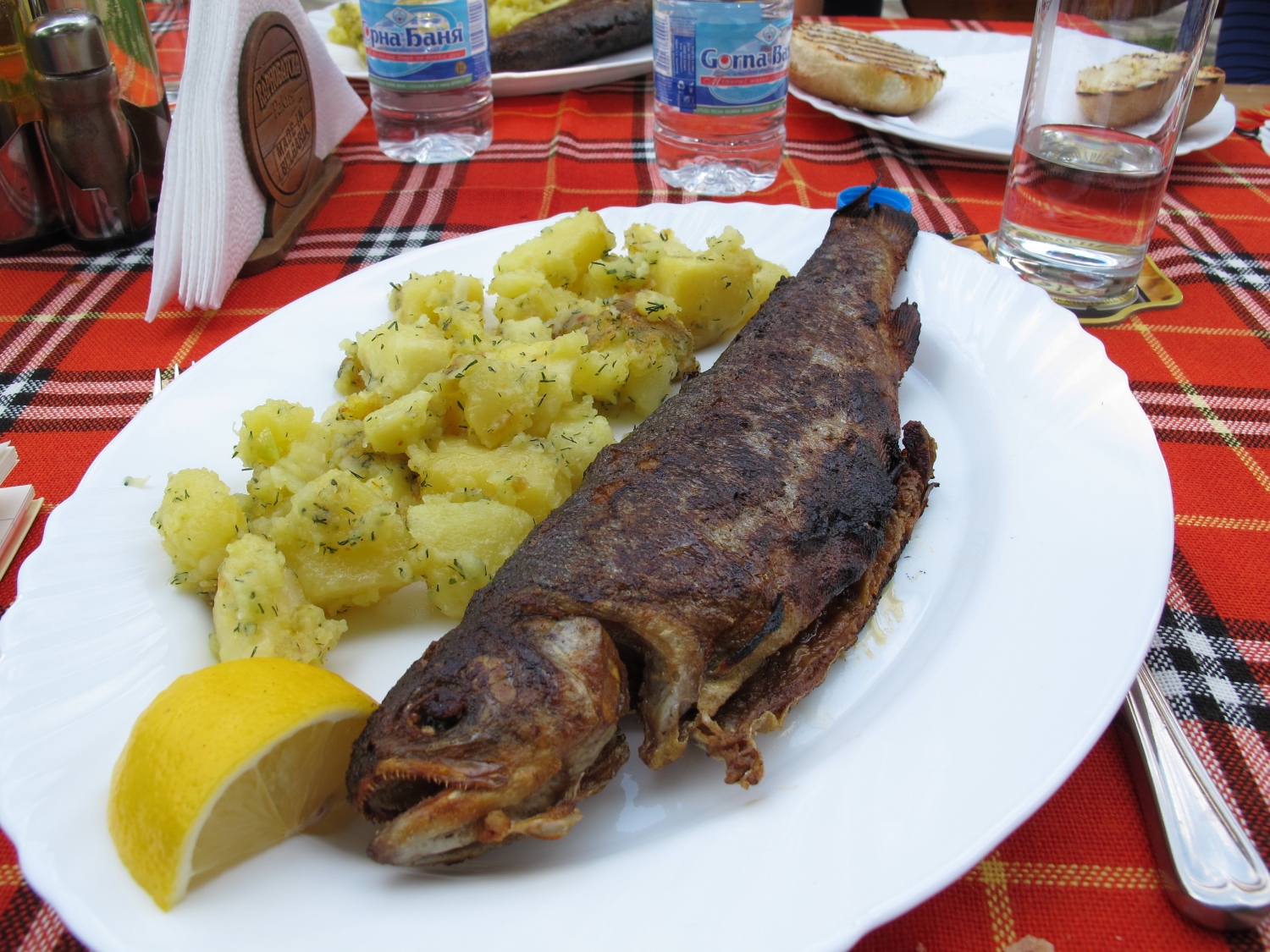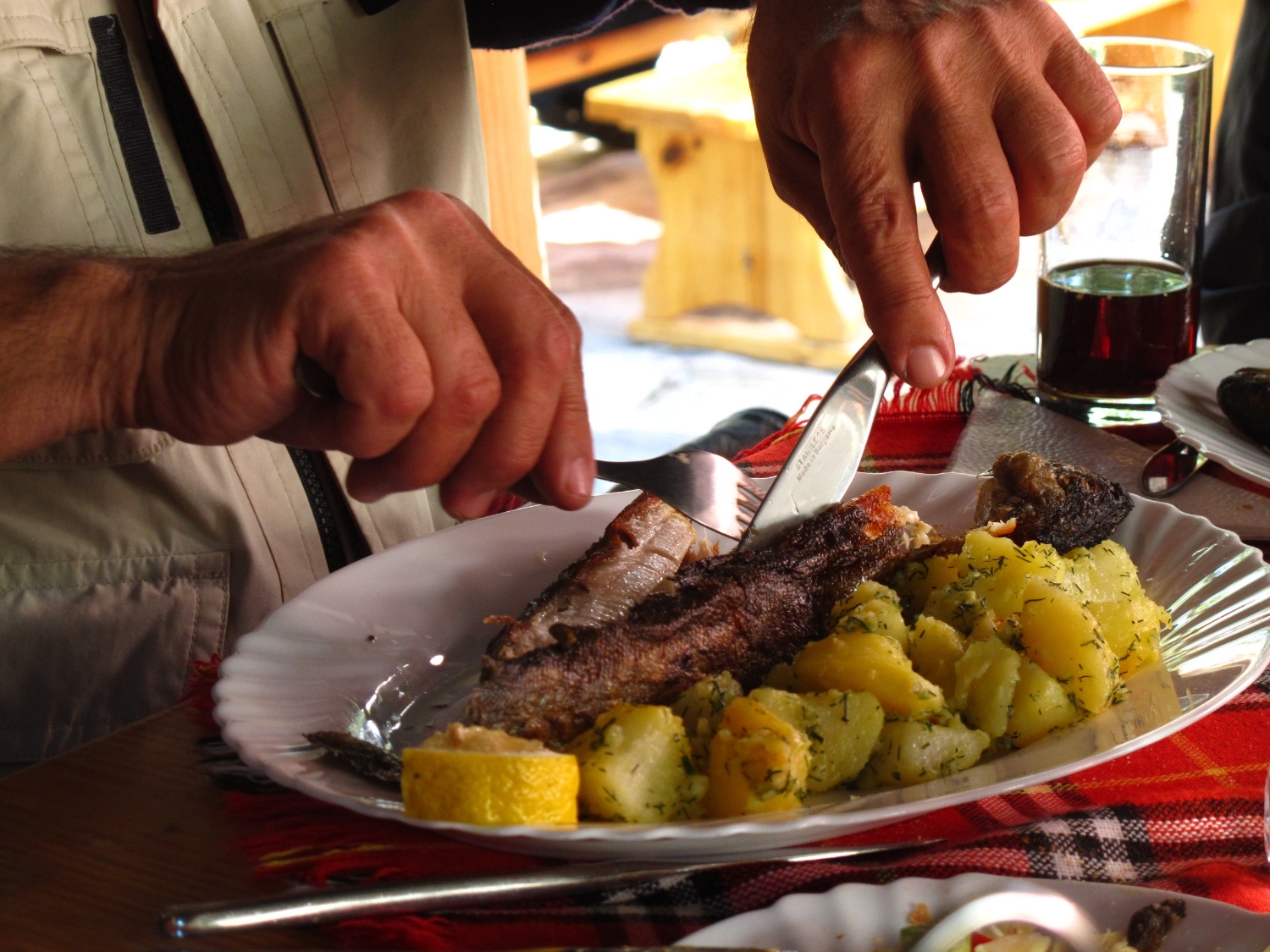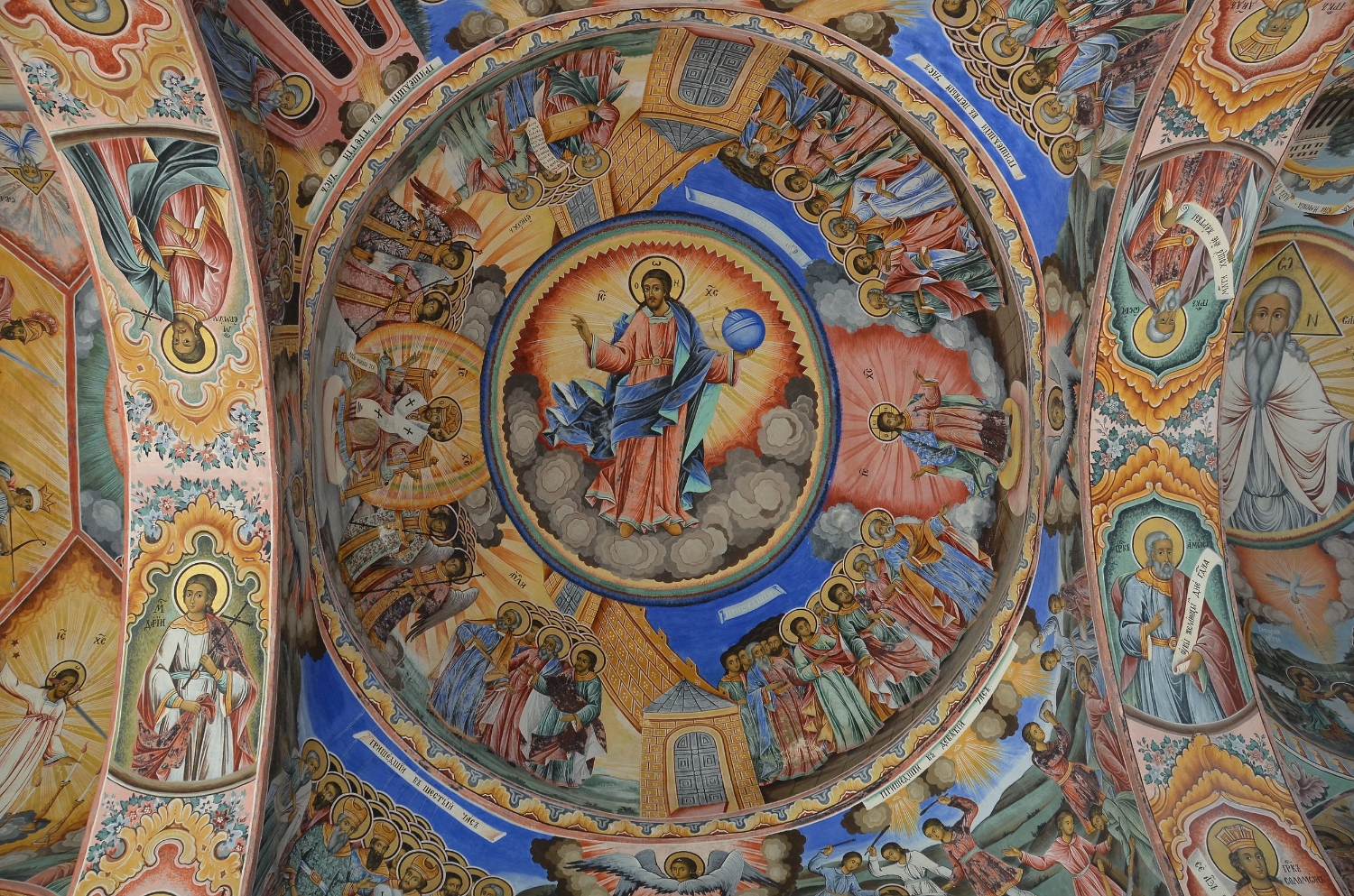Feast your eyes; fill your soul. Rich images cover The Church of the Nativity, Rila Monastery, Bulgaria. The current church was started in 1835, replacing a smaller, Medieval church. Master painters worked together to layout the 1200 paintings and completed them within several years. Many were from Samokov and included the Zograph family, also Ivan and Nikola Obrazopissets came and some from Bansko.
We are greeted by this golden dove fountain shimmering in sunlight. Water splashes into the basin and birds sing from nearby trees. © Evelyn Weliver Church of the Nativity, Rila Monastery, Bulgaria
Church of the Nativity, Rila Monastery, Bulgaria. ©Del Weliver
Rila Monastery sources tell us that Pavel, an experienced builder, designed and built this church using spatial ideas from Mount Athos, Greece. There is a magnificent wooden and gilded iconostasis that has sculptural qualities. Atanas Teladour led the group of woodcarvers from 1839-42. All the artists and builders that have built and repaired Rila Monastery are Bulgarian.
The images and colors in the paintings tell stories and lessons about life and how to live. Those on the outside instruct as well as help to prepare you for entering the holy sanctuary.
Church of the Nativity, Rila Monastery, Bulgaria © Evelyn Weliver
Church of the Nativity, Rila Monastery, Bulgaria © Evelyn Weliver
I know these are paintings of evil devils, but the figures seem humorous to me.
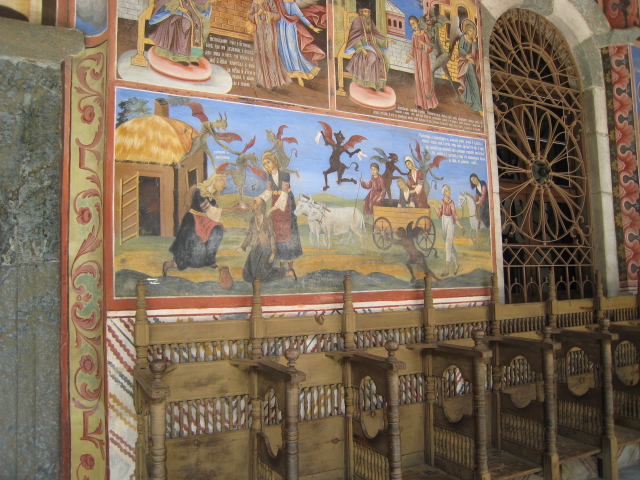
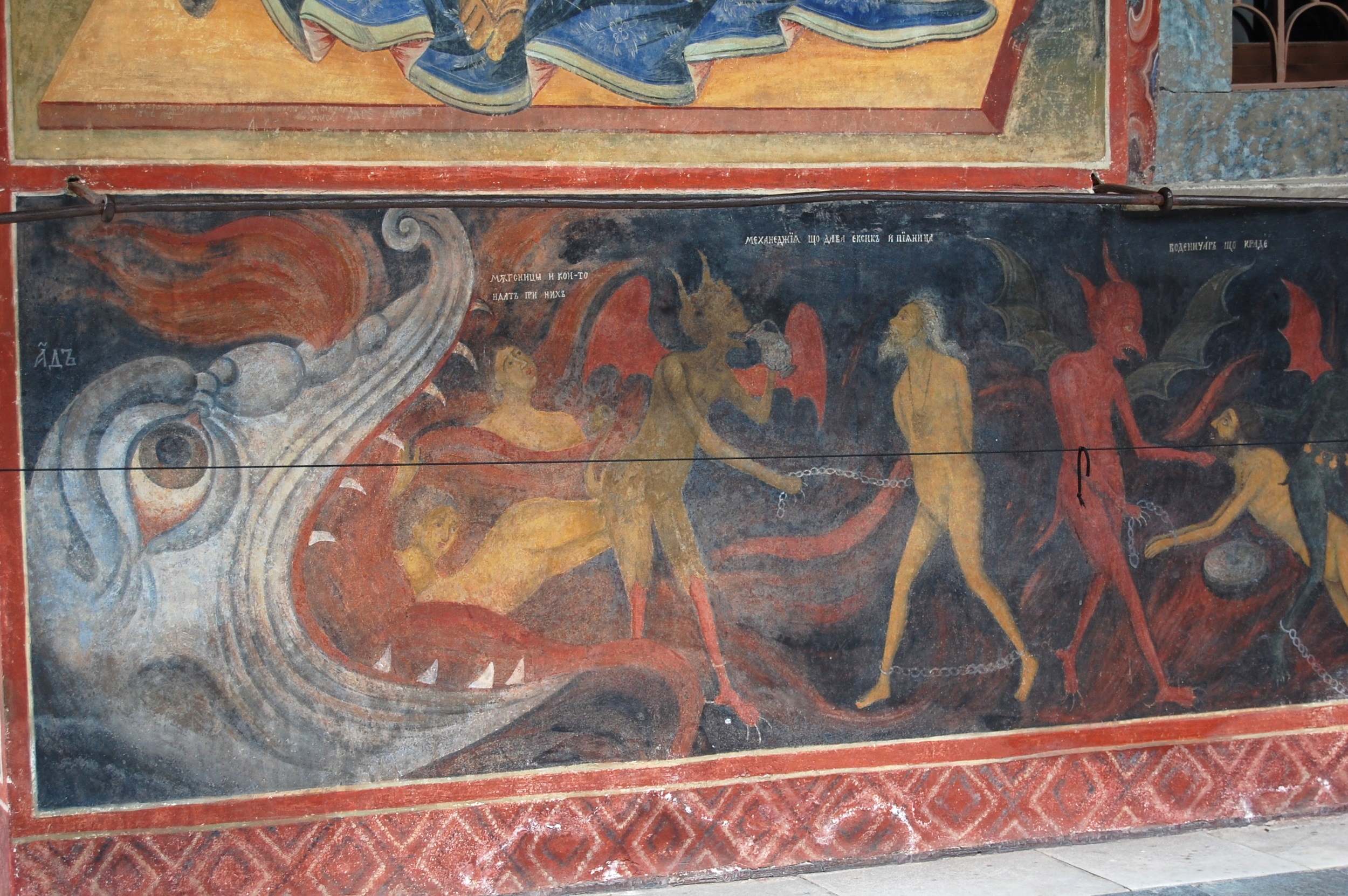
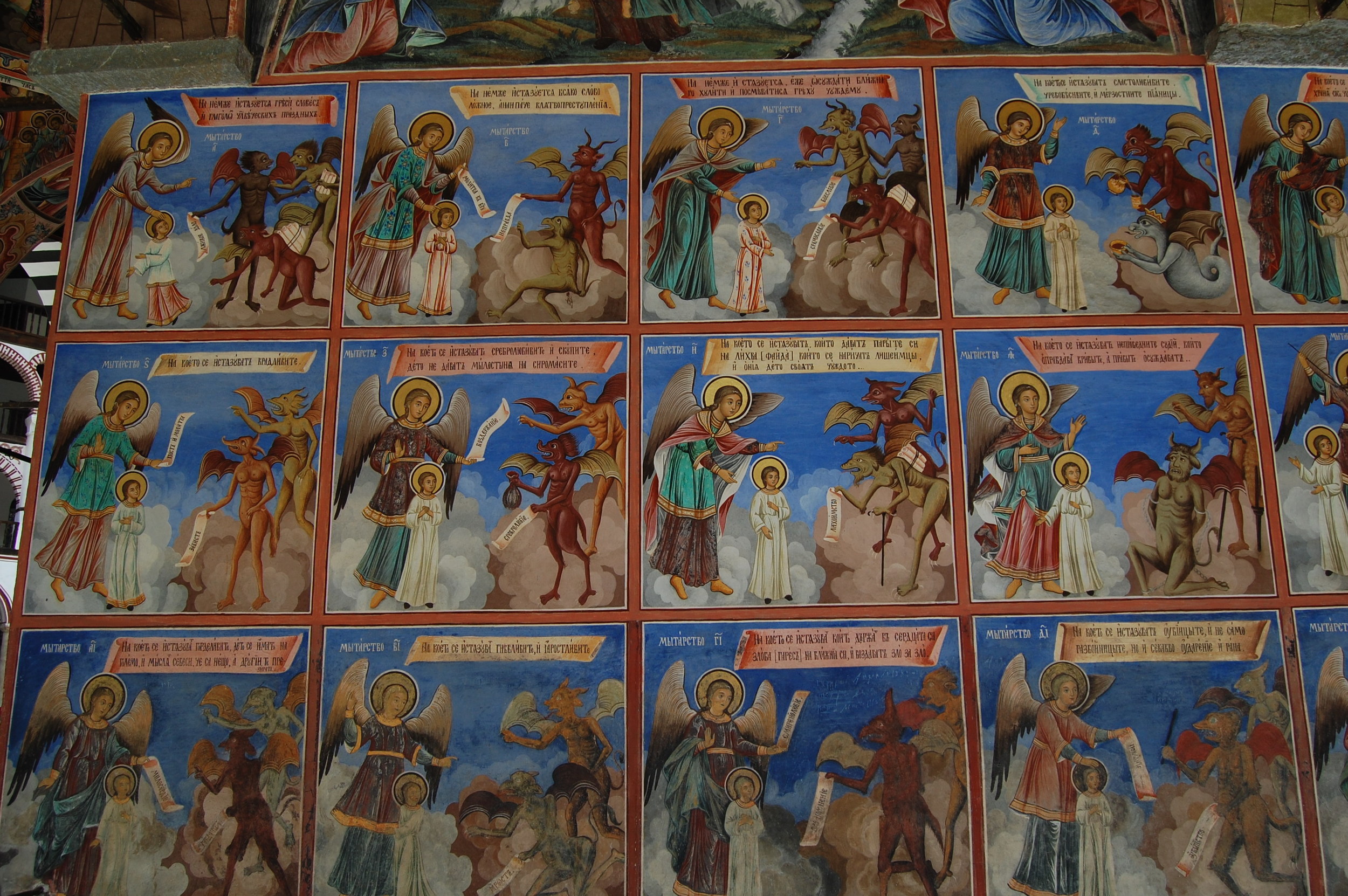
These images are of saints connected with the life and deeds of the Holy Virgin. © Del Weliver Church of the Nativity, Rila Monastery, Bulgaria
I like the floral design on this angel's dress. You can see designs in some of the other paintings, too. © Del Weliver Church of the Nativity, Rila, Bulgaria
Church of the Nativity, Rila Monastery, Bulgaria. This area shows the complexity of laying out the paintings. © Del Weliver
Rila Monastery was the first monastery in Bulgaria, established near the end of the 10th century by the followers of St. John of Rila. Monasteries were started in Asia Minor in the 3rd and 4th centuries. In the 9th century on Mount Athos, Greece, the monks wrote the democratic rules for monasteries. Our guide, Alex Palichev, told us about the decision making process. For example, to make a decision seven monks have to agree. If they don't, then the decision is delayed for 3 months. If there is still no consensus, then the topic is delayed for 2 years. The subject is dropped if they cannot agree at that time. Decisions are implemented by three monks: the treasurer, librarian and head priest. They each have their own round stamp and have to put it on the document. This is the same with the safe. It takes three different keys to open it.
There used to be 750 monks here, but now there are only 17 operating the monastery. They have an identification card with their religious name on it. Using this they can travel without visas to all orthodox countries.
Remember that this is the most important monastery in Bulgaria and that St. John of Rila is the patron saint of Bulgaria. During the latter part of the Ottoman Turks' 500 years of oppression, the monks were able to establish schools, print books and provide a safe place for ideas to be discussed. The cultural heritage of Bulgaria was and is preserved here.
Entering the church, I am filled with awe of this holy place so lovingly built and cared for by Bulgarian's. © Evelyn Weliver Church of the Nativity, Rila Monastery, Bulgaria
The Church of the Nativity is quiet, dimly lit with candles and streams of light from windows in the dome. People stand with heads bowed, praying beside the pale yellow taper candles they have placed in sand basins on stands. Some walk up to the iconostasis and reverently kiss the icon of Mary. Others pray for help in front of a 30 paneled relic container with 30 fragments of saints.
We were there one fall day, October 18, the day before St. John of Rila's Day of Commemoration on the 19th. St. John followed Christ's teachings and is revered as a miracle worker. At this time his glass covered casket is placed in front of the iconostasis and his hand can be viewed. A black robed priest stands beside him. People walk slowly past, bowing and making the sign of the cross. Each year his body is wrapped in fresh cotton batting. People are given a small piece of this white cotton to take home with them. We were fortunate to be part of this; the viewing had begun a day early. It is quite a moving experience to feel the reverence and the history while people pray for miracles and help with their lives.
I walked beside the body of St. John of Rila, stopped and bowed my head. I did not make the sign of the cross. Afterwards, the priest spoke to the person walking with me. I felt that the priest did not approve of my participating in the viewing if I was not of the Orthodox faith. Being here and taking part in the viewing was meaningful to me. I am sorry that I upset him. Perhaps I should have made the sign of the cross, but this gesture is not a part of my protestant upbringing.
The gold is cleaned in a side chapel where beloved Tzar Boris III is probably buried. (King 1918-1943, born 1894.) © Evelyn Weliver
I like the beautiful detail in a side chapel. © Evelyn Weliver Church of the Nativity, Rila Monastery, Bulgaria
This sign is posted in the monastery. © Evelyn Weliver. Rila Monastery, Bulgaria.
The iron door into the museum is a work of art. © Evelyn Weliver. The top animal is a griffon. It is part eagle, king of the air, and part lion, king of the earth, a very royal symbol of strength. In addition to showing strength and to guarding royalty, this symbol has been used to guard treasures. It is very fitting on the door to the museum.
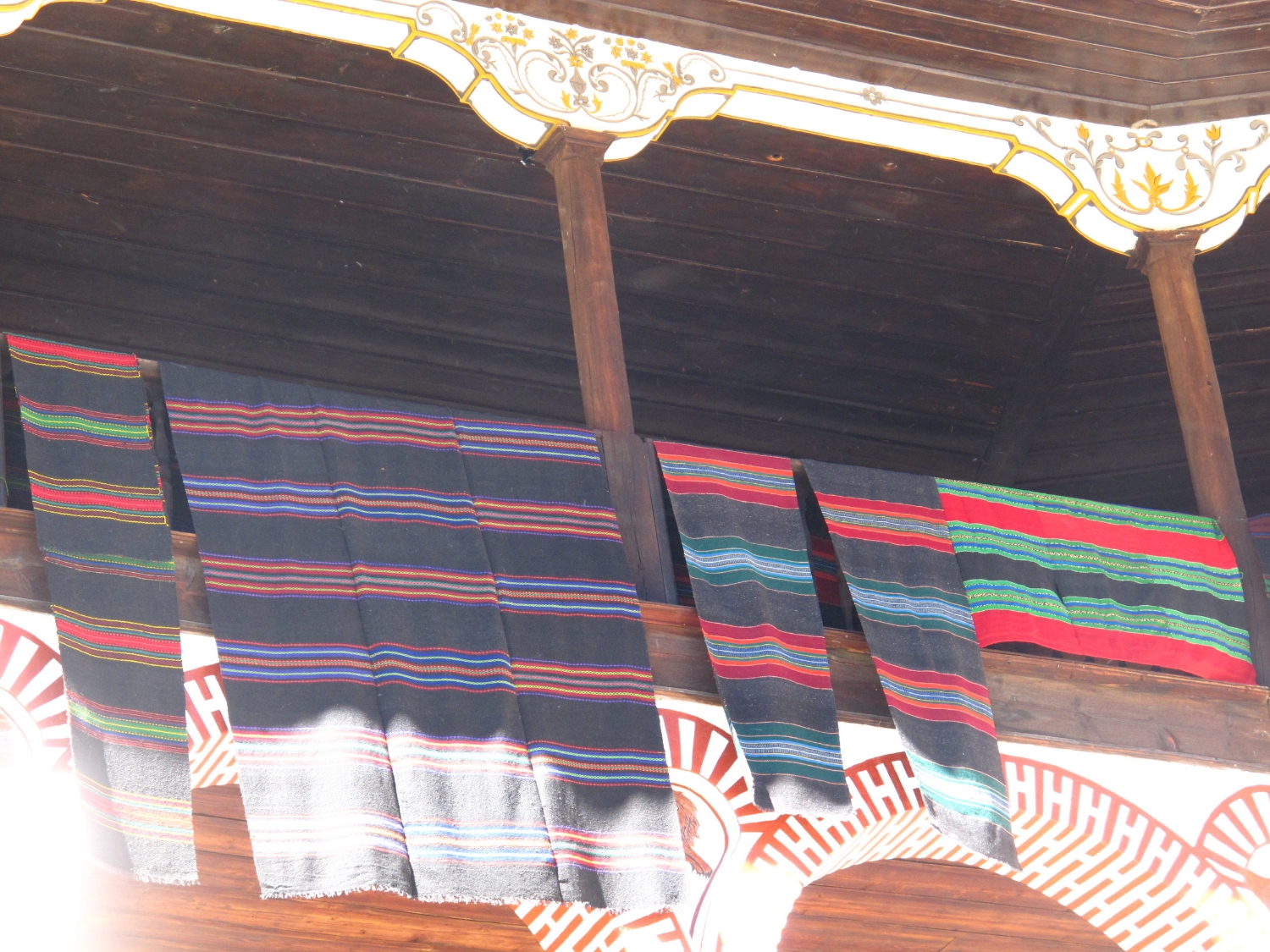
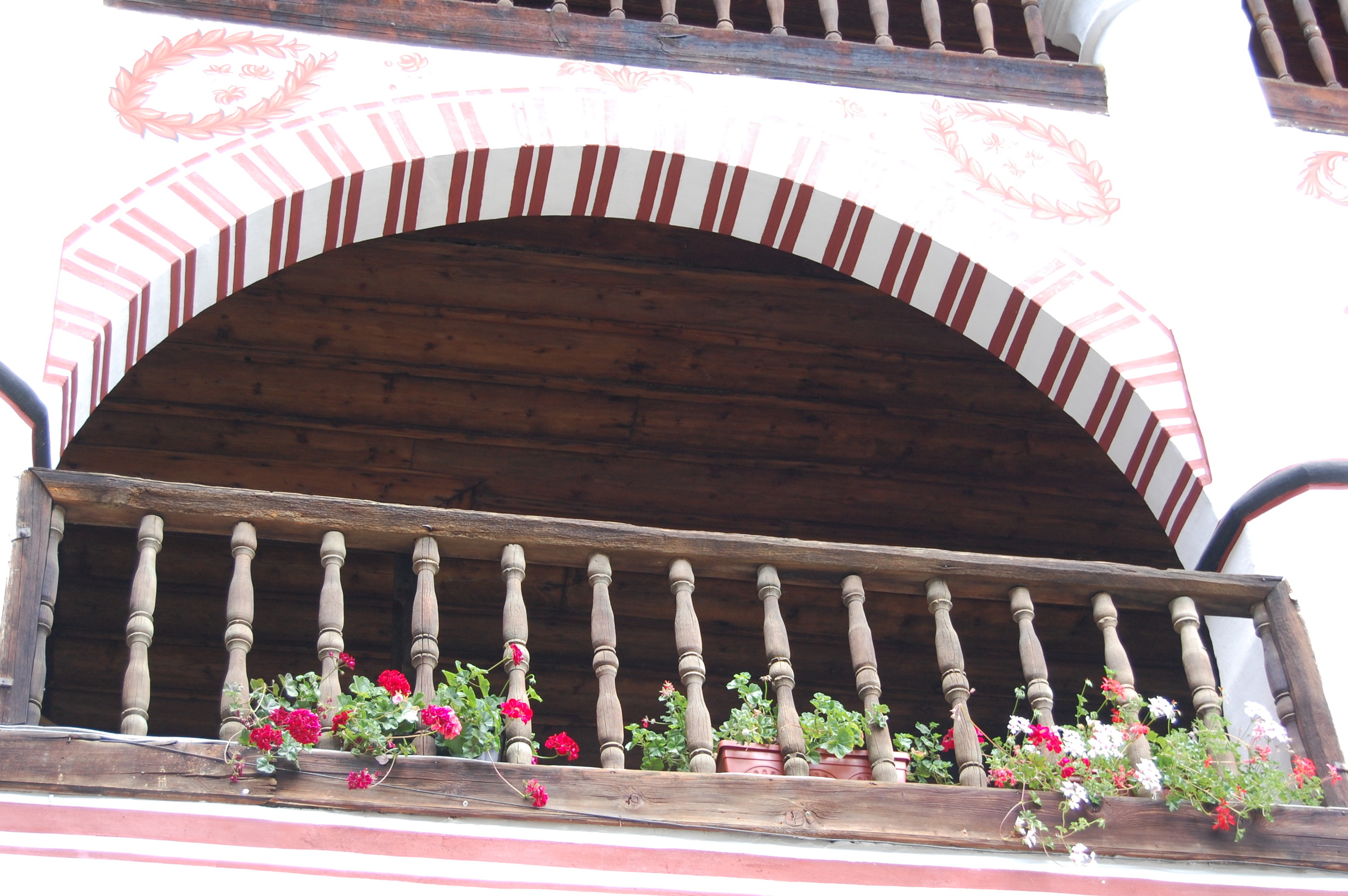

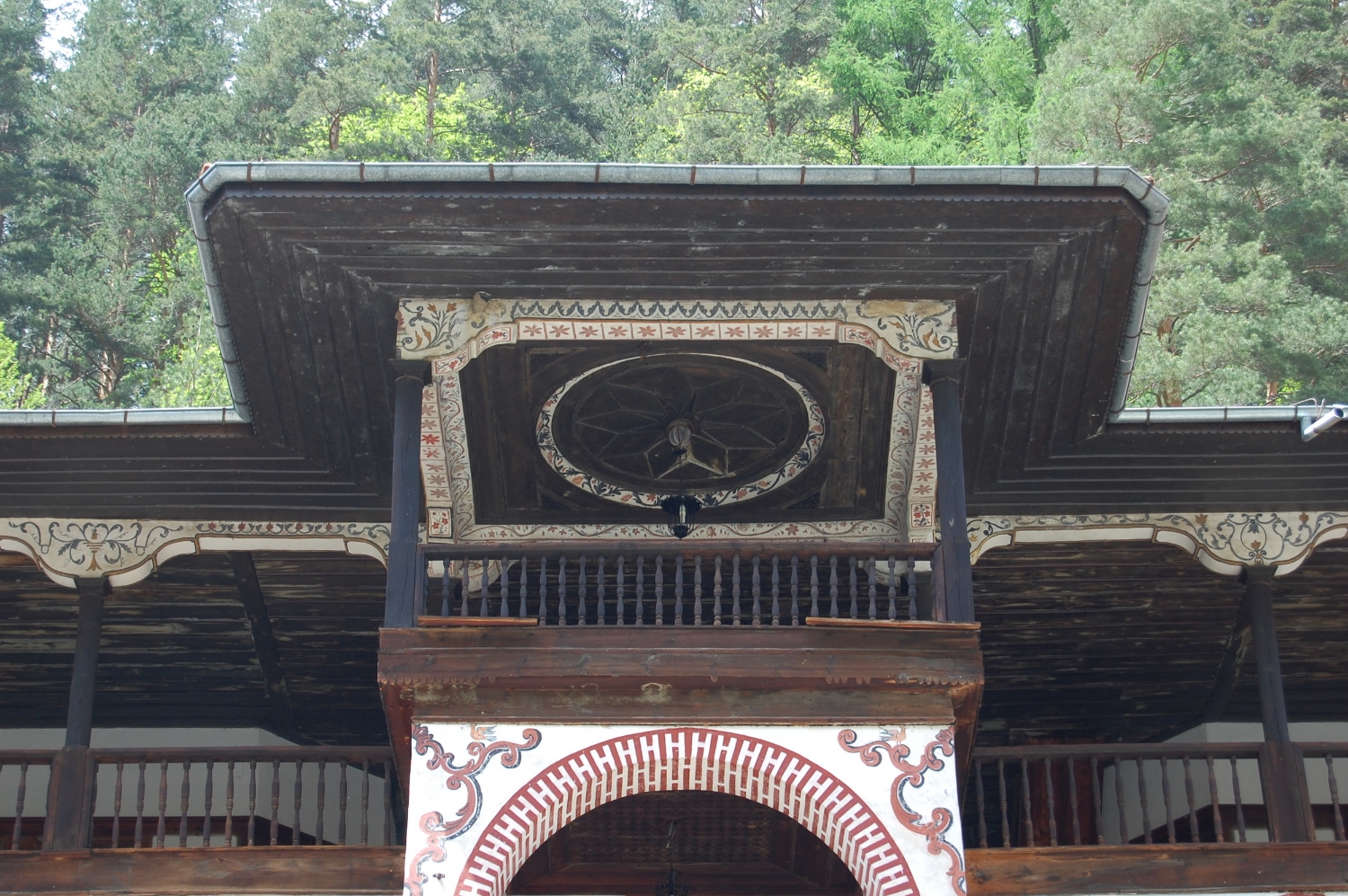
At first I thought this lion was sleeping peacefully in front of the gates to Heaven, but it is not. His eyes are wide open and claws are extended! If you enter the door, do you enter Heaven? © Evelyn Weliver. Rila Monastery
Delicate and strong, royal purple columbine grow between the rocks. Rila Monastery, Bulgaria. © Evelyn Weliver
I know there is a lot of symbolism in these images. The more I read, the more I see that what they might mean varies. For the most part, I have decided to simply present the images for you to enjoy and think about in your own way, but I couldn't resist a couple of embellishments.
For example, this is the way I think about the golden dove fountain pictured at the beginning.
Water symbolizes life and it is also purifying or cleansing. (In fact, Rila means water. The monastery is built in the Rila Mountains that are full of water: springs, rivers and lakes.)
The dove may represent the Holy Spirit. It is perched on top of a cross.
Gold can mean: God, power and/or wisdom. In ancient times, the Sun God was also represented with gold.
So while I view the artistic beauty of the fountain, I also think it may be saying God's powerful and wise spirit is over all life and is life giving in all ways. People come and drink from the ever running fountain like they come to worship in the Church of the Nativity, nourishing their souls and receiving everlasting life. I view the fountain as an artistic summary for the church.
Sources: (Note: I am going to put lunch pictures after this section about sources. Don't miss lunch!)
Our guide (with translator) at Rila in 2015 was our own guide and host Alex Palichev, because a local English speaking guide was not available.
http://bulgariatravel.org/en/object/272/rilski_manastir
Other resources as previously listed in Parts One and Two. Pictures copyright by Del and Evelyn Weliver.
UNESCO website: " Rila Monastery is the most important spiritual and literary center of the Bulgarian national revival, with an uninterrupted history from the Middle Ages until present times. Reconstruction work was required following a fire, and sections of the monastery, a new church and other structures date to the 18th century. The property fully endorses authenticity requirements regarding location, context, concept, usage, function and tradition, where the spirit and feeling of the site are also properly preserved.”
After all this, you must be hungry. Let's go to lunch nearby. We always eat outdoors at this delightful restaurant, Diabolical Waters, just above the swiftly running Rila River
